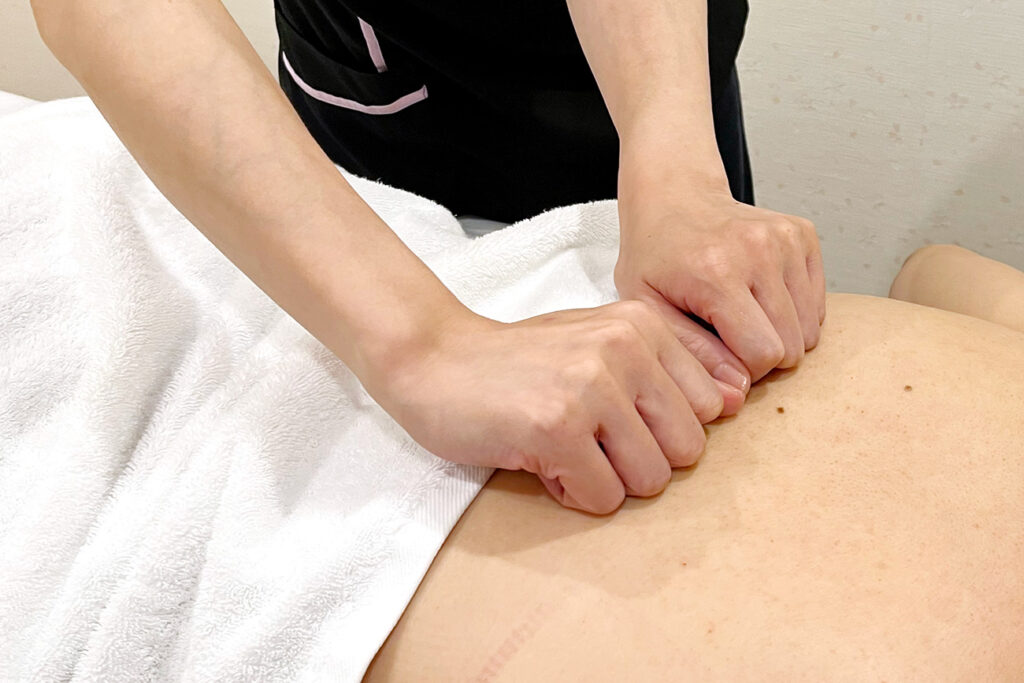Deep tissue massage is a treatment expected to relieve chronic muscle tension and pain.
This article explains what deep tissue massage is and covers its benefits, precautions, and types in detail.
What Is Deep Tissue Massage? Approaching the Deep Muscles
Definition and Features of Deep Tissue Massage
Deep tissue massage is a massage technique that works on the deep layers of muscle and connective tissue. It aims to relieve chronic muscle tension and pain, and is characterized by stronger pressure than a typical oil massage.
This massage releases deeply accumulated tension and promotes circulation, supporting functional improvement throughout the body.
It can also provide mental relaxation and help reduce stress.
Sessions are performed by therapists with specialized knowledge and skills, adjusting pressure and approach to each person’s condition and needs.
How It Differs from a Regular Oil Massage
A regular oil massage is mainly for relaxation and uses gentle strokes over the surface of the muscles.
Deep tissue massage, by contrast, uses stronger pressure to reach deeper layers of muscle.
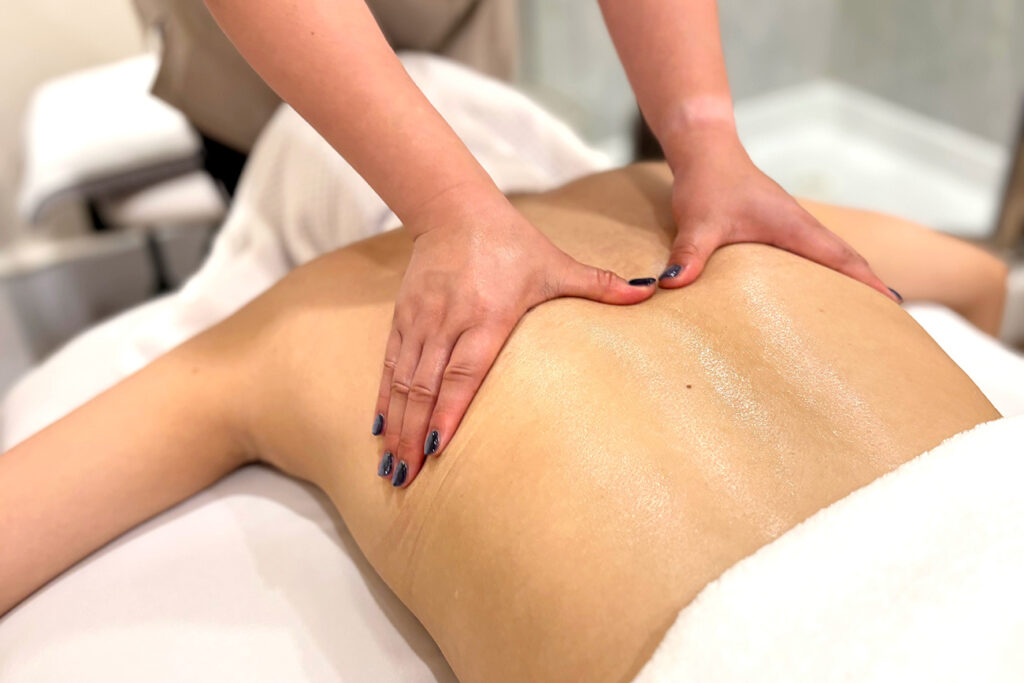
While oil massage eases surface-level muscle tension, deep tissue massage targets the root causes of persistent pain and stiffness.
Therefore, its effects tend to last longer after a session.
Oil massage suits those seeking relaxation and general recovery, whereas deep tissue massage is better for people with chronic pain or muscle tightness.
Who Is It Recommended For?
Deep tissue massage is recommended for the following:
- People with chronic shoulder or lower-back pain
- Those who sit for long periods or keep the same posture
- People wanting faster recovery from sports-related fatigue or injuries
- Those experiencing stress or mental tension
- People concerned about poor posture
For these issues, deep tissue massage can relax muscles and boost circulation, helping improve symptoms.
However, those who are pregnant or have specific medical conditions should consult a physician beforehand.
Benefits of Deep Tissue Massage
Easing Muscle Tension and Reducing Pain
By working on deeper layers, deep tissue massage eases long-standing muscle tension and reduces pain.
Prolonged tightness can impair blood flow and compress nerves, causing discomfort.
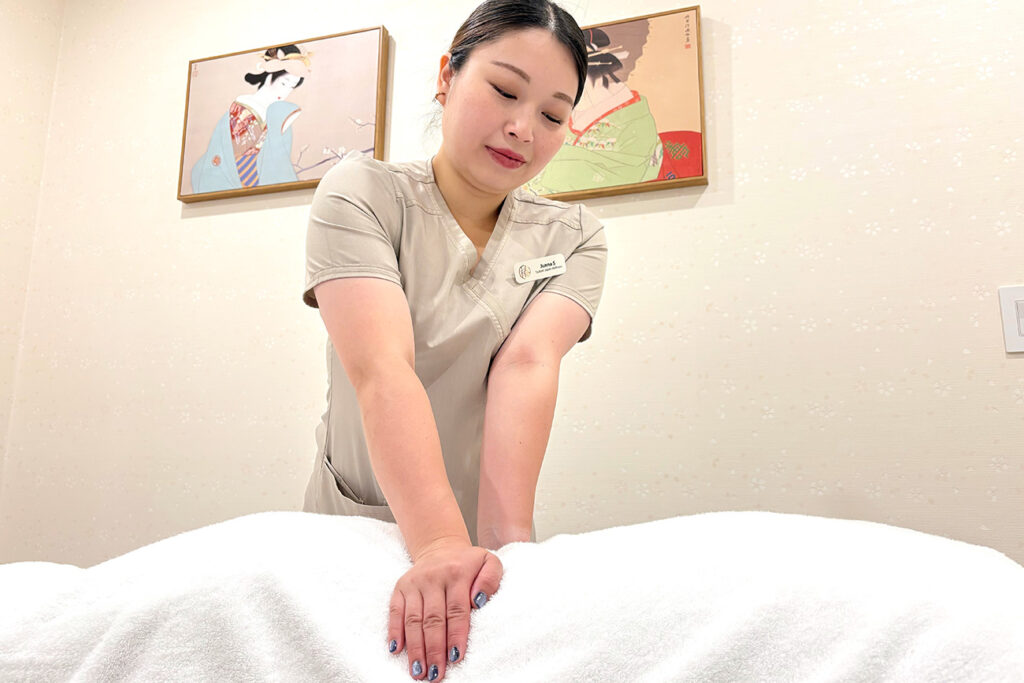
By relaxing muscles and improving circulation, these symptoms can be relieved.
It’s especially effective for shoulder stiffness, back pain, and neck tension related to long desk work or inactivity.
Greater flexibility also widens joint range of motion and makes movement smoother.
Promoting Circulation and Flexibility
Applying pressure to the deep muscle layers stimulates blood vessels and enhances circulation.
Improved blood flow increases oxygen supply to tissues and aids waste removal.
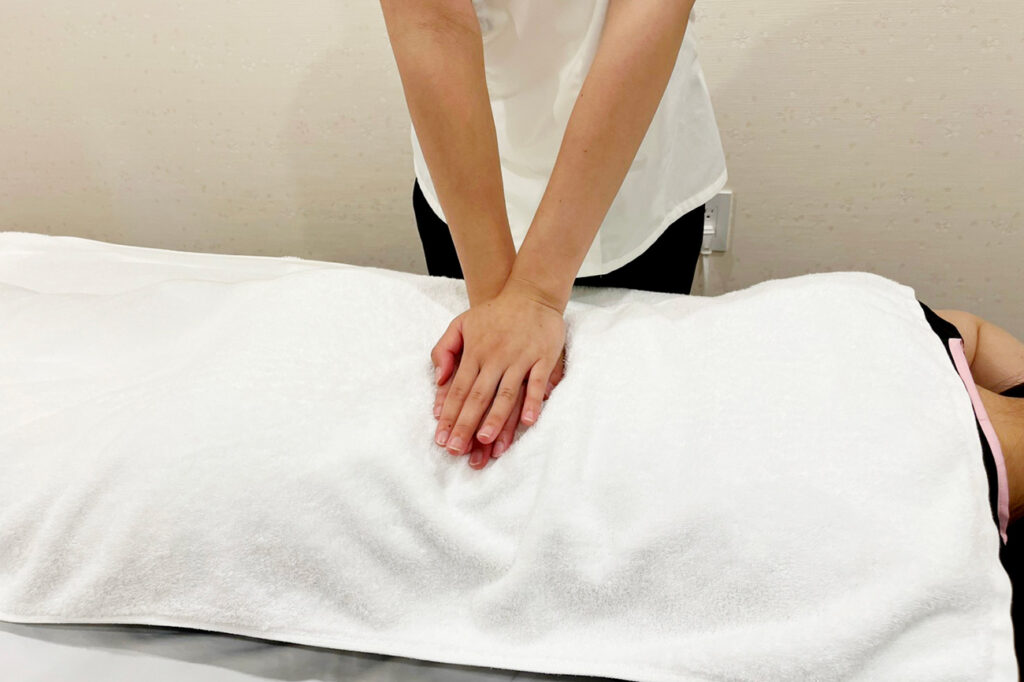
This speeds muscle recovery and improves flexibility.
Better circulation can also ease cold sensitivity and swelling.
Improved flexibility helps prevent injuries.
For active people and athletes, regular sessions may even boost performance.
Mental Relaxation Effects
Deep tissue massage offers psychological benefits as well as physical ones.
Receiving massage activates the parasympathetic nervous system, bringing a calm, relaxed state to body and mind.

As muscles release, stress and anxiety decrease, supporting emotional stability.
Massage also encourages the release of endorphins and other “feel-good” hormones that lift mood.
In a stressful modern world, deep tissue massage is an ideal way to refresh both mind and body.
Receiving it regularly can increase stress resilience and help maintain a healthier lifestyle.
Precautions When Receiving Deep Tissue Massage
How to Choose a Therapist
Deep tissue massage requires specialized knowledge and techniques.
Before your session, clearly communicate your symptoms and concerns, and receive a thorough explanation of the procedure and any risks.
If you feel pain during treatment, do not hesitate to tell the therapist.
Finding a reliable professional helps ensure a safe and effective experience.
Post-Session Reactions
Various reactions may appear after a deep tissue massage.
Mild muscle soreness or pleasant fatigue from the release of tension is common and typically subsides within a few days.
Be sure to hydrate well and keep your body warm afterward.
Avoid strenuous exercise and long, hot baths immediately after treatment.
If symptoms persist or worsen, consult your therapist.
Understanding these reactions and providing proper aftercare will help you get the most from your deep tissue massage.
Contraindications
Deep tissue massage is not appropriate for everyone.
Please avoid sessions if any of the following apply:
- Pregnancy
- Active infections
- Skin inflammation or open wounds
- Malignant tumors
- Blood clotting disorders
- Severe osteoporosis
In these cases, deep tissue work may worsen your condition.
If you have chronic illnesses or take medication, consult your physician beforehand to confirm whether treatment is appropriate.
Reviewing contraindications carefully will help you receive massage safely.
Types and Techniques of Deep Tissue Massage
Different Approaches
There are several ways to apply deep tissue techniques.
Representative methods include the elbow technique, knuckle technique, and finger technique.
The elbow technique uses the elbow to deliver deep pressure to broad areas, efficiently loosening large muscles.
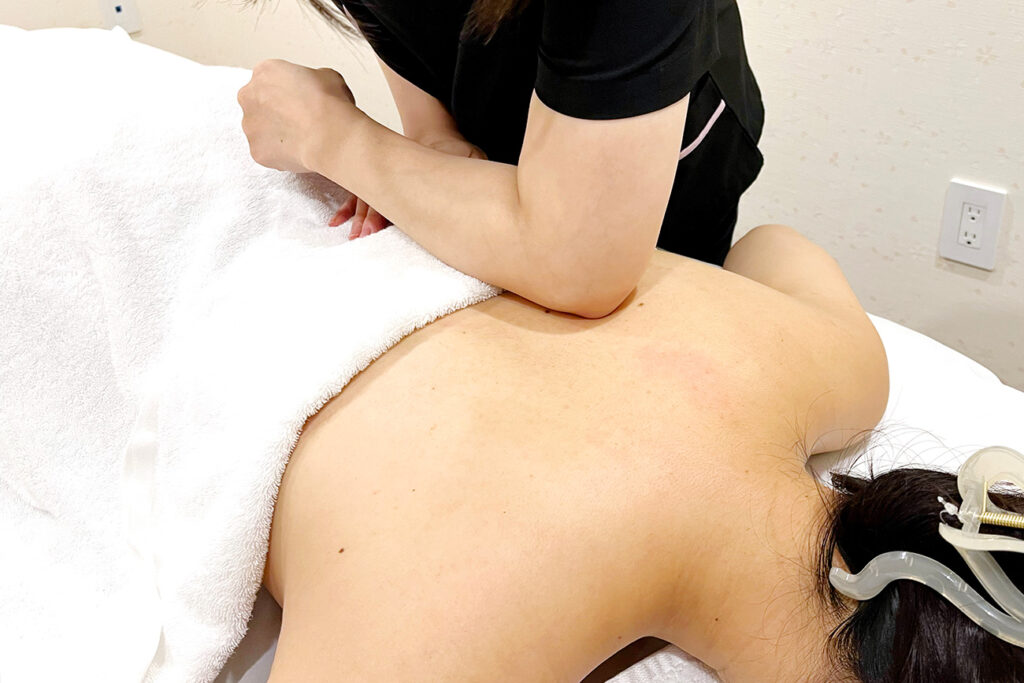
The knuckle technique applies pinpoint pressure with the finger joints, effectively releasing trigger points.
The finger technique uses the fingertips for delicate, precise work that reaches into smaller areas.
Therapists combine these methods to tailor sessions to each individual’s condition and goals.
Summary: Feel Better with Deep Tissue Massage
By targeting deep muscles, deep tissue massage can ease chronic tension and pain, improve circulation, and increase flexibility.
It also supports mental relaxation and stress relief.
When booking, review therapist selection, possible aftereffects, and contraindications to ensure a safe experience.
Incorporating deep tissue massage into your routine can help you achieve a more comfortable body and a calmer mind.
Free yourself from daily stress and fatigue and enjoy a more active, fulfilling life by giving deep tissue massage a try.
Regular maintenance sessions can also help prevent issues and support long-term health.

